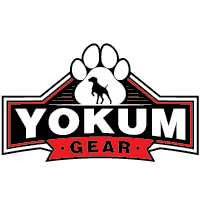As a responsible pet owner, ensuring the safety and comfort of your furry friend is paramount. A no-slip dog harness can be an excellent investment, providing better control and reducing the risk of your dog slipping out during walks. With a multitude of options available in the market, choosing the perfect no-slip dog harness can be daunting. This guide aims to simplify the process by outlining key factors to consider, various types of harnesses, and additional features to look out for.
Key Factors to Consider
Size and Fit
The most crucial factor in choosing a no-slip dog harness is ensuring it fits your dog correctly. A harness that is too tight can cause discomfort and even injury, while one that is too loose defeats the purpose of preventing your dog from slipping out. Measure your dog's chest and neck girth accurately and refer to the manufacturer's sizing chart to find the best fit. Adjustable straps are highly recommended as they allow for a more customized fit.
Material
The material of the harness affects both its durability and comfort. Common materials include nylon, polyester, and padded fabrics. A durable material like nylon or polyester is essential for active dogs, while padding can provide additional comfort, preventing chafing and irritation.
Design
The design of the harness can significantly impact its effectiveness in preventing slips. Look for harnesses that have multiple points of adjustment and straps that wrap securely around the chest and torso. A Y-shaped design can offer better distribution of pressure, making it harder for your dog to back out of the harness.
Types of No-Slip Dog Harnesses
Overhead Harnesses
Overhead harnesses typically slip over the dog’s head and are secured around the chest and torso with adjustable straps. These are generally easier to put on and provide a snug fit. However, some dogs may not like having a harness slipped over their head, making this style less suitable for them.
Step-in Harnesses
Step-in harnesses require your dog to step into the harness, which is then lifted and secured around the torso. This design can be more convenient for dogs that dislike overhead harnesses. Ensure the harness provides enough adjustment points to prevent slipping.
Front-Clip Harnesses
Front-clip harnesses have a leash attachment point at the chest, making them excellent for training and controlling pulling. The front-clip design discourages your dog from pulling by redirecting their forward motion. However, make sure the harness fits securely to prevent any potential slipping.
Additional Features to Look Out For
Reflective Elements
Safety should always be a priority, especially during early morning or late evening walks. Harnesses with reflective stitching or patches enhance your dog's visibility in low-light conditions, reducing the risk of accidents.
Handles
A handle on the back of the harness can be incredibly useful for better control in high-traffic areas or during training sessions. It also provides an added layer of security, allowing you to quickly grab your dog if needed.
Breathability
Breathable fabrics like mesh are ideal for dogs living in warmer climates or those prone to overheating. These materials ensure proper air circulation, keeping your pet comfortable during walks.
Conclusion
Choosing the perfect no-slip dog harness involves considering several important factors, including size, material, and design. By understanding the different types of harnesses and additional features available, you can make an informed decision that ensures your pet's safety and comfort. Remember, a well-fitted harness not only prevents escapes but also enhances the overall walking experience for both you and your dog.

